Reducing eyelid swelling. Understanding Eyelid Swelling: Causes, Symptoms, and Effective Treatments
What causes eyelid swelling. How to identify symptoms of swollen eyelids. When to seek medical attention for eyelid issues. What are the most effective treatments for swollen eyelids. How to prevent recurrent eyelid swelling.
The Nature of Eyelid Swelling: Causes and Symptoms
Eyelid swelling occurs when fluid accumulates in the tissues surrounding the eye. This condition can be accompanied by discomfort, itching, or pain. Understanding the underlying causes of eyelid swelling is crucial for effective treatment and prevention.
Common causes of eyelid swelling include:
- Allergies
- Blepharitis (inflamed eyelids)
- Conjunctivitis (pinkeye)
- Shingles
- Chalazion (clogged oil gland in the eyelid)
- Stye (eyelid infection)
- Orbital cellulitis (infection around the eye socket)
- Thyroid conditions, such as Graves’ disease
Can eyelid swelling be a sign of a serious condition? While most cases of eyelid swelling are benign and resolve on their own, persistent or severe swelling may indicate a more serious underlying condition. It’s important to monitor your symptoms and seek medical attention if the swelling persists or is accompanied by other concerning symptoms.

Recognizing the Signs: When to Consult a Doctor
While many cases of eyelid swelling resolve naturally within 24 to 48 hours, certain symptoms warrant immediate medical attention. Be vigilant and consult a healthcare professional if you experience any of the following:
- Persistent swelling lasting more than 48 hours
- Fever
- Vision loss or changes
- Double vision
- Abnormal protrusion or bulging of one or both eyes
During a medical consultation, your doctor will conduct a thorough examination of your eye and eyelid. They will inquire about your symptoms and look for additional clues that may indicate the underlying cause of the swelling, such as skin changes or pain.
Effective Home Remedies for Eyelid Swelling
While waiting for a medical appointment or for mild cases of eyelid swelling, several home remedies can help alleviate symptoms and promote healing:
- Apply a cool compress to the affected area for 15 minutes, twice daily. This helps reduce inflammation and soothes the skin.
- Gently cleanse the eyelid area using a mixture of baby shampoo and warm water. Use a cotton swab or soft washcloth, and rinse thoroughly afterward.
- Avoid wearing eye makeup or contact lenses until the swelling subsides.
- Use over-the-counter artificial tears to keep your eyes moisturized.
- If allergies are suspected, try antihistamine eye drops to relieve symptoms.
Is it safe to use warm compresses for eyelid swelling? While cool compresses are generally recommended for acute swelling, warm compresses can be beneficial for certain conditions like chalazions or styes. However, it’s best to consult with your doctor before applying heat to the affected area.
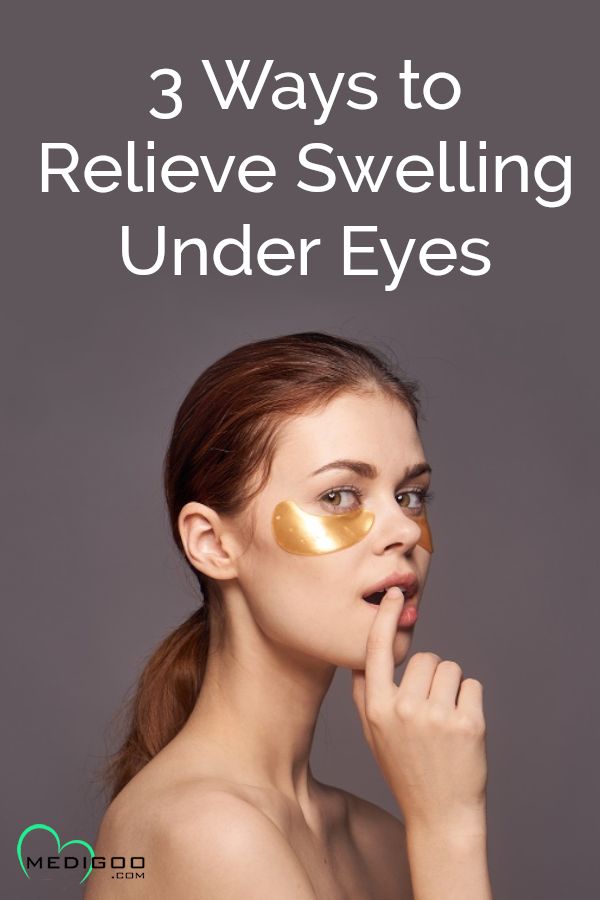
Medical Treatments for Swollen Eyelids
The treatment approach for swollen eyelids depends on the underlying cause. Your healthcare provider may recommend one or more of the following treatments:
- Antibiotic eye drops, ointments, or creams for bacterial infections
- Oral antibiotics for more severe infections
- Steroid medications to reduce inflammation
- Antihistamines for allergy-related swelling
- Specialized treatments for specific conditions like blepharitis or chalazions
How long does it typically take for eyelid swelling to subside with medical treatment? The duration of treatment and recovery can vary depending on the underlying cause and severity of the condition. Most cases show significant improvement within a few days to a week with appropriate treatment. However, some chronic conditions may require ongoing management.
Preventing Recurrent Eyelid Swelling: Lifestyle and Hygiene Tips
Adopting good eye hygiene practices and making certain lifestyle changes can help prevent recurrent eyelid swelling:
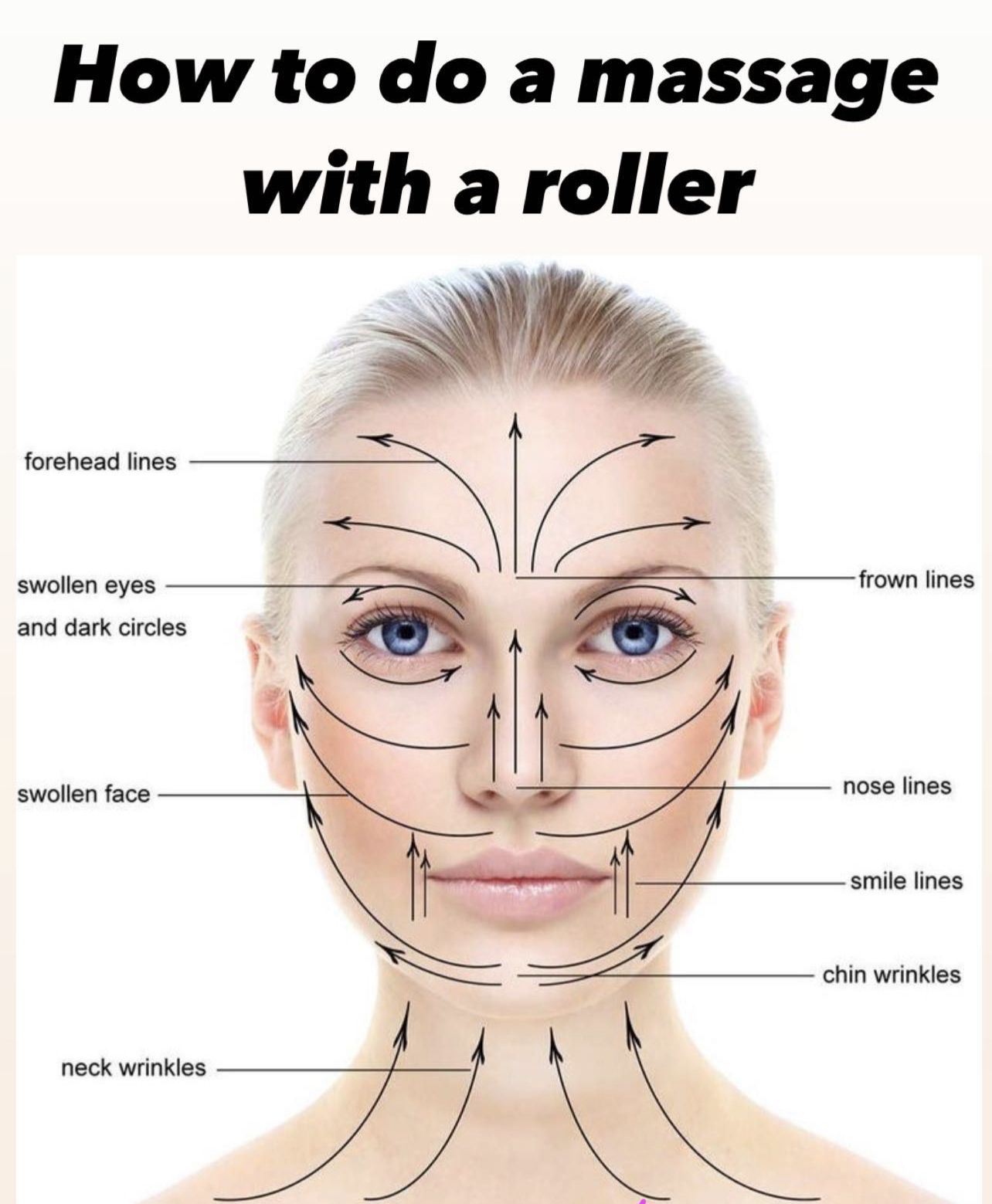
- Wash your hands frequently, especially before touching your eyes or face
- Remove eye makeup thoroughly before going to bed
- Replace eye makeup regularly to prevent bacterial growth
- Avoid sharing eye makeup or personal eye care items
- Use hypoallergenic cosmetics if you have sensitive skin
- Manage underlying conditions like allergies or blepharitis as directed by your doctor
- Stay hydrated and maintain a balanced diet rich in vitamins and minerals
Can dietary changes help prevent eyelid swelling? While there’s no specific diet that prevents eyelid swelling, consuming foods rich in omega-3 fatty acids, vitamin C, and vitamin E may support overall eye health and reduce inflammation. Additionally, staying hydrated helps maintain proper fluid balance in the body, potentially reducing the likelihood of swelling.
Understanding the Link Between Allergies and Eyelid Swelling
Allergies are a common cause of eyelid swelling. When the body encounters an allergen, it releases histamines, which can cause inflammation and fluid retention in the delicate tissues around the eyes. Common allergens that may trigger eyelid swelling include:

- Pollen
- Dust mites
- Pet dander
- Mold spores
- Certain cosmetics or skincare products
How can you differentiate between allergy-related eyelid swelling and other causes? Allergy-related swelling is often accompanied by itching, redness, and watery eyes. It may also affect both eyes simultaneously and be associated with other allergy symptoms like sneezing or a runny nose. If you suspect allergies are causing your eyelid swelling, consider keeping a diary to track potential triggers and consult with an allergist for proper diagnosis and management.
Managing Allergy-Related Eyelid Swelling
To manage and prevent allergy-related eyelid swelling, consider the following strategies:
- Identify and avoid known allergens when possible
- Use air purifiers in your home to reduce airborne allergens
- Wash your face and rinse your eyes with cool water after exposure to allergens
- Apply cold compresses to reduce swelling and provide relief
- Use over-the-counter antihistamine eye drops as directed
- Consider oral antihistamines for more severe allergic reactions
- Consult with an allergist for long-term management strategies, such as immunotherapy
The Impact of Digital Devices on Eyelid Health
In today’s digital age, prolonged use of computers, smartphones, and tablets has become increasingly common. This extended screen time can contribute to various eye-related issues, including eyelid swelling and discomfort. The phenomenon known as “digital eye strain” or “computer vision syndrome” can manifest in several ways:
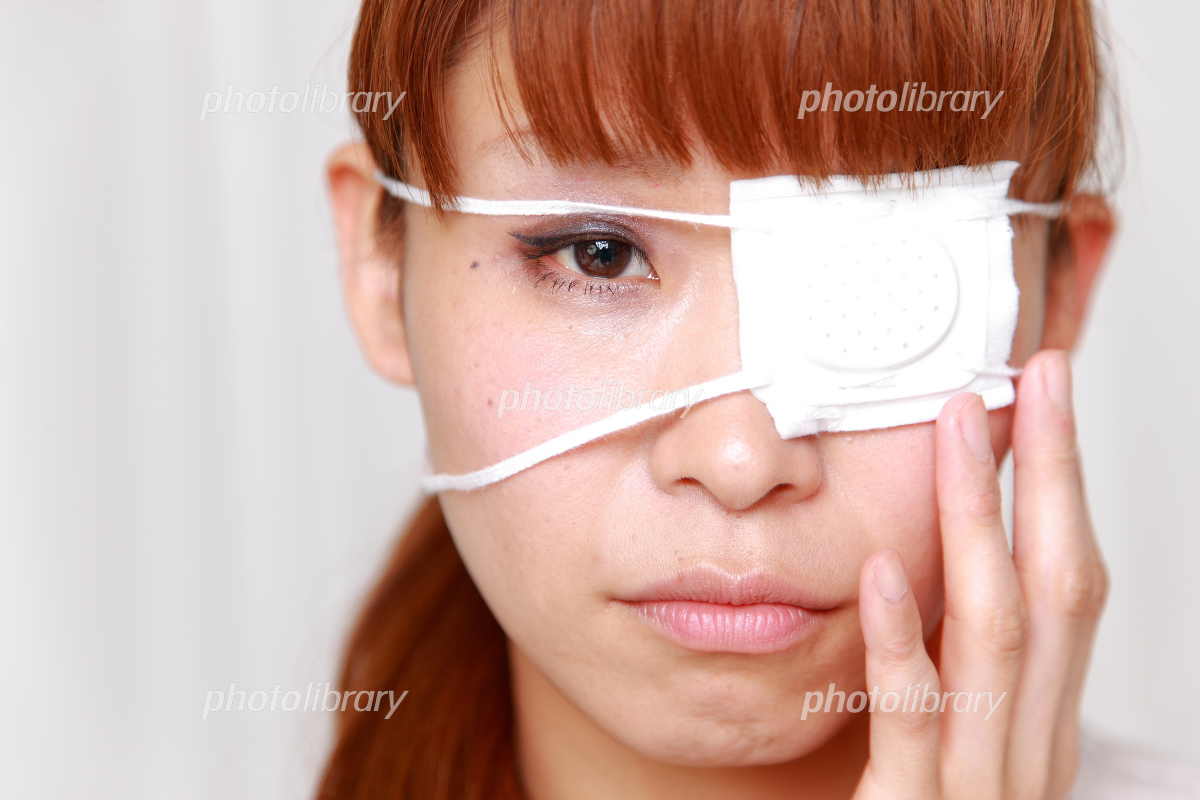
- Dry, irritated eyes
- Blurred vision
- Eye fatigue
- Headaches
- Neck and shoulder pain
Can excessive screen time directly cause eyelid swelling? While excessive screen time doesn’t directly cause eyelid swelling, it can contribute to eye strain and dryness, which may lead to rubbing or touching the eyes more frequently. This increased contact can potentially introduce bacteria or irritants, leading to inflammation and swelling.
Strategies to Protect Your Eyes During Screen Time
To minimize the impact of digital devices on your eye health and reduce the risk of eyelid swelling, consider implementing these practices:
- Follow the 20-20-20 rule: Every 20 minutes, take a 20-second break and look at something 20 feet away
- Adjust your screen’s brightness and contrast for comfortable viewing
- Position your screen at arm’s length and slightly below eye level
- Use artificial tears to keep your eyes lubricated during extended screen use
- Blink frequently to maintain eye moisture
- Consider using blue light filtering glasses or screen protectors
- Ensure proper lighting in your workspace to reduce eye strain
Exploring the Connection Between Stress and Eyelid Swelling
While stress is not a direct cause of eyelid swelling, it can contribute to various factors that may lead to or exacerbate the condition. Chronic stress can impact your overall health and potentially affect your eyes in the following ways:

- Weakened immune system, making you more susceptible to infections
- Disrupted sleep patterns, which can affect eye health
- Increased likelihood of rubbing or touching your eyes due to fatigue or anxiety
- Potential exacerbation of existing conditions like allergies or autoimmune disorders
How does stress management contribute to overall eye health? Effective stress management can play a crucial role in maintaining good eye health. By reducing stress levels, you may improve your overall well-being, strengthen your immune system, and potentially decrease the frequency of eye-related issues, including eyelid swelling.
Stress-Reduction Techniques for Better Eye Health
Incorporating stress-reduction techniques into your daily routine can have a positive impact on your eye health and overall well-being. Consider trying the following methods:
- Practice mindfulness meditation or deep breathing exercises
- Engage in regular physical activity, such as yoga or walking
- Maintain a consistent sleep schedule to ensure adequate rest
- Pursue hobbies or activities that bring you joy and relaxation
- Connect with friends and family for social support
- Consider professional counseling or therapy if stress becomes overwhelming
- Implement time management strategies to reduce work-related stress
The Role of Nutrition in Eyelid Health and Swelling Prevention
While no specific diet can guarantee the prevention of eyelid swelling, maintaining a balanced and nutrient-rich diet can support overall eye health and potentially reduce the risk of inflammation. Certain nutrients are particularly beneficial for eye health:

- Omega-3 fatty acids: Found in fish, flaxseeds, and walnuts, these can help reduce inflammation
- Vitamin A: Essential for eye function, found in carrots, sweet potatoes, and spinach
- Vitamin C: An antioxidant that supports eye health, found in citrus fruits, berries, and bell peppers
- Vitamin E: Another antioxidant that protects eye cells, found in nuts, seeds, and avocados
- Zinc: Important for retinal health, found in oysters, beef, and pumpkin seeds
- Lutein and Zeaxanthin: Carotenoids that support eye health, found in leafy greens and egg yolks
Can certain foods trigger eyelid swelling? While food allergies can potentially cause eyelid swelling in sensitive individuals, it’s relatively uncommon. However, some people may experience eye-related symptoms after consuming foods high in histamines or sulfites. If you suspect a food-related trigger, consider keeping a food diary and consult with an allergist or dietitian for personalized advice.
Hydration and Eye Health
Proper hydration plays a crucial role in maintaining overall eye health and can potentially help prevent or reduce eyelid swelling. Adequate fluid intake supports the following eye-related functions:

- Maintains the natural moisture balance in your eyes
- Helps flush out toxins and irritants
- Supports proper tear production and quality
- Aids in reducing inflammation throughout the body
- Promotes overall cellular health, including eye tissues
How much water should you drink to support eye health? While individual needs may vary, a general guideline is to aim for 8-10 glasses (64-80 ounces) of water per day. However, factors such as climate, activity level, and overall health may influence your specific hydration needs. Listen to your body and consult with a healthcare professional for personalized recommendations.
Understanding the Impact of Environmental Factors on Eyelid Health
Various environmental factors can contribute to eyelid swelling and other eye-related issues. Being aware of these factors and taking appropriate precautions can help maintain optimal eye health:
- Air pollution: Particulate matter and irritants in the air can cause eye irritation and inflammation
- Dry or windy conditions: Can lead to eye dryness and increased rubbing
- High humidity: May create an environment conducive to bacterial or fungal growth
- Extreme temperatures: Both hot and cold weather can affect eye comfort and health
- UV radiation: Prolonged sun exposure can damage delicate eye tissues
How can you protect your eyes from environmental hazards? Implementing protective measures can significantly reduce the impact of environmental factors on your eye health. Consider the following strategies:
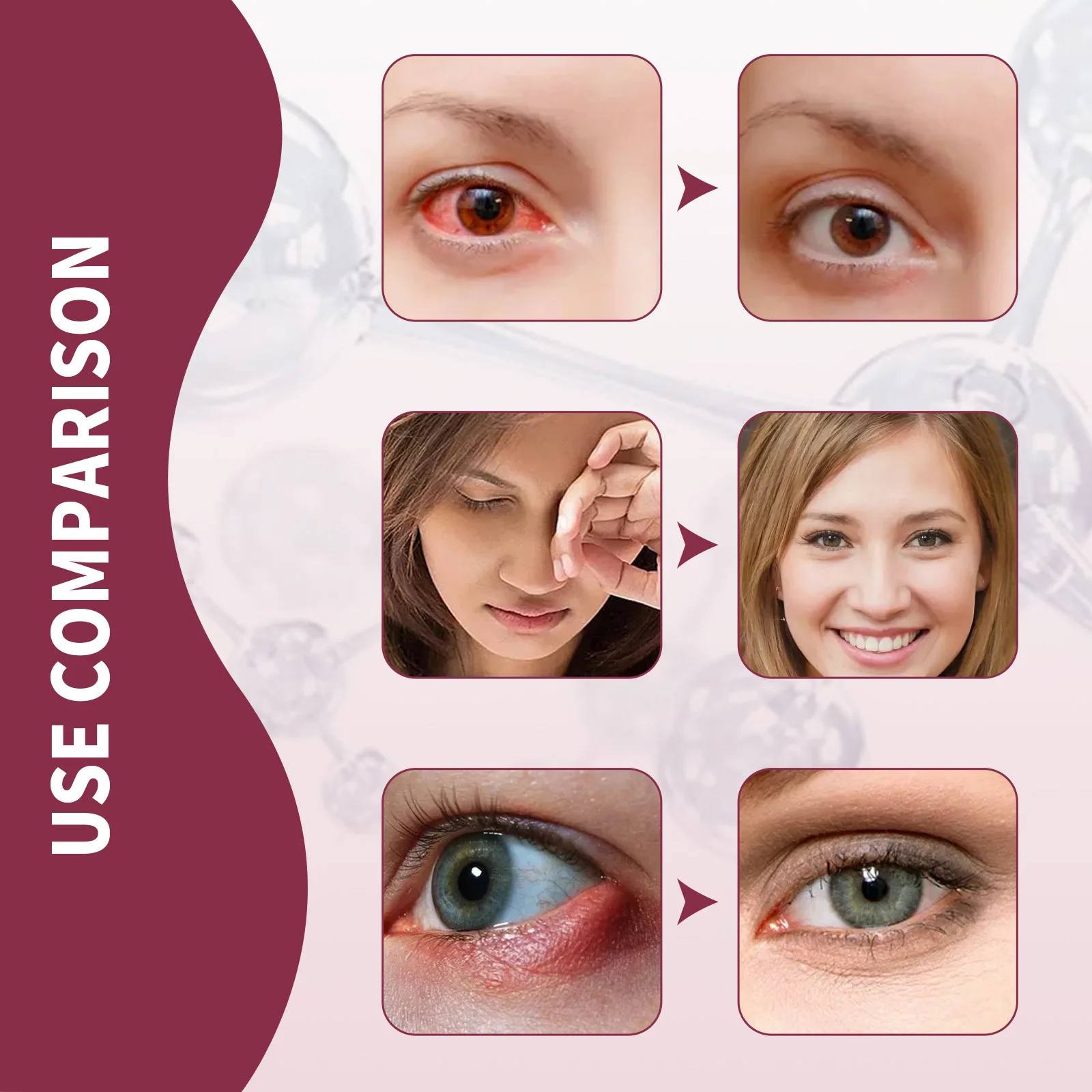
- Wear sunglasses with UV protection when outdoors
- Use protective eyewear in dusty or windy conditions
- Install air purifiers in your home or office to reduce indoor air pollutants
- Use a humidifier in dry environments to maintain optimal eye moisture
- Take regular breaks when exposed to extreme temperatures or environmental conditions
- Avoid rubbing your eyes, especially when exposed to potential irritants
- Rinse your eyes with clean water if exposed to irritants or pollutants
By understanding the various factors that can contribute to eyelid swelling and implementing preventive measures, you can maintain better eye health and reduce the frequency of eye-related issues. Remember to consult with a healthcare professional for personalized advice and treatment if you experience persistent or concerning symptoms.
Inflammation, Infections, Causes, & Treatment
Written by Stephanie Booth
Medically Reviewed by Poonam Sachdev on February 26, 2023
- What Is a Swollen Eyelid?
- Swollen Eyelid Causes
- When Should You See a Doctor?
- Swollen Eyelid Treatment
- Eyelid Treatment Follow-up
A swollen eyelid happens when fluid collects in the tissues around your eye. You might also have itching or pain.
A swollen eyelid is often a symptom of another medical condition, including:
- Allergies
- Inflamed eyelids (blepharitis)
- Pinkeye (conjunctivitis)
- Shingles
- A clogged oil gland in your eyelid (chalazion)
- An eyelid infection (stye)
- An infection around your eye socket (orbital cellulitis)
- Thyroid conditions, such as Graves’ disease
A swollen eyelid happens when fluid collects in the tissues around your eyes. You might also have itching or pain.
Eyelid swelling usually goes away on its own within a day or so. If it doesn’t get better in 24-48 hours, see your eye doctor. If you have a fever, vision loss, double vision, or if one or both of your eyes are abnormally protruding or bulging, you should see a doctor right away. They’ll ask about your symptoms and look at your eye and eyelid. They’ll also check for clues about what’s causing the swelling, such as skin changes or pain.
Treatment of a swollen eyelid depends on the cause. If you have an infection, you may need to use antibiotic eye drops, ointment, or cream to help clear up your symptoms. If that doesn’t help, your doctor might give you antibiotics to take by mouth. You also may take a steroid medication.
To ease your symptoms, take care of your eyes and keep the area around them clean:
- Apply a compress. Putting a clean, wet cloth on your eyes twice a day for 15 minutes at a time will loosen the crust from your eyelashes and help get rid of extra oil that might be plugging up your glands.

- Gently wash the area. After you take off the compress, use a cotton swab or washcloth to lightly clean your lids with a mixture of baby shampoo and water. Rinse well afterward.
- Give your eyes a rest. Until your symptoms get better, don’t wear eye makeup or contact lenses.
- Care for dry eyes. Use over-the-counter artificial tears to keep your eyes moist. Antihistamine drops can help with allergies.
Avoid wearing contact lenses until the condition improves.
If you seek medical help, the health care provider will do an eye exam and may do some tests. Treatment will depend on the cause of inflammation. If the cause is an infection, the health care provider will prescribe an antibiotic ointment.
© 2023 WebMD, LLC. All rights reserved. View privacy policy and trust info
Inflammation, Infections, Causes, & Treatment
Written by Stephanie Booth
Medically Reviewed by Poonam Sachdev on February 26, 2023
- What Is a Swollen Eyelid?
- Swollen Eyelid Causes
- When Should You See a Doctor?
- Swollen Eyelid Treatment
- Eyelid Treatment Follow-up
A swollen eyelid happens when fluid collects in the tissues around your eye. You might also have itching or pain.
You might also have itching or pain.
A swollen eyelid is often a symptom of another medical condition, including:
- Allergies
- Inflamed eyelids (blepharitis)
- Pinkeye (conjunctivitis)
- Shingles
- A clogged oil gland in your eyelid (chalazion)
- An eyelid infection (stye)
- An infection around your eye socket (orbital cellulitis)
- Thyroid conditions, such as Graves’ disease
A swollen eyelid happens when fluid collects in the tissues around your eyes. You might also have itching or pain.
Eyelid swelling usually goes away on its own within a day or so. If it doesn’t get better in 24-48 hours, see your eye doctor. If you have a fever, vision loss, double vision, or if one or both of your eyes are abnormally protruding or bulging, you should see a doctor right away. They’ll ask about your symptoms and look at your eye and eyelid. They’ll also check for clues about what’s causing the swelling, such as skin changes or pain.
Treatment of a swollen eyelid depends on the cause. If you have an infection, you may need to use antibiotic eye drops, ointment, or cream to help clear up your symptoms. If that doesn’t help, your doctor might give you antibiotics to take by mouth. You also may take a steroid medication.
To ease your symptoms, take care of your eyes and keep the area around them clean:
- Apply a compress. Putting a clean, wet cloth on your eyes twice a day for 15 minutes at a time will loosen the crust from your eyelashes and help get rid of extra oil that might be plugging up your glands.
- Gently wash the area. After you take off the compress, use a cotton swab or washcloth to lightly clean your lids with a mixture of baby shampoo and water. Rinse well afterward.
- Give your eyes a rest. Until your symptoms get better, don’t wear eye makeup or contact lenses.
- Care for dry eyes.
 Use over-the-counter artificial tears to keep your eyes moist. Antihistamine drops can help with allergies.
Use over-the-counter artificial tears to keep your eyes moist. Antihistamine drops can help with allergies.
Avoid wearing contact lenses until the condition improves.
If you seek medical help, the health care provider will do an eye exam and may do some tests. Treatment will depend on the cause of inflammation. If the cause is an infection, the health care provider will prescribe an antibiotic ointment.
© 2023 WebMD, LLC. All rights reserved. View privacy policy and trust info
Causes, Symptoms and Treatments
Contents
- 1 Eyelid Swelling: Causes, Symptoms and Treatment
- 1.1 Understanding Eyelid Swelling
- 1.2 Types of Eyelid Swelling
- 1.3 Causes of Eyelid Swelling 9 0008
- 1.4 Eyelid edema symptoms
- 1.5 Eyelid edema diagnosis
- 1.5.1 Visual examination
- 1.5.2 Eye pressure measurement
- 1.5.3 Blood and urine test
- 1.5. 4 Ultrasound examination
- 1.
 5.5 Computed tomography
5.5 Computed tomography
- 1.6 How to avoid swelling of the eyelid?
- 1.7 How to treat eyelid edema
- 1.8 We treat eyelid edema with folk remedies!
- 1.8.1 Remedy 1: Parsley leaves
- 1.8.2 Remedy 2: Green tea compresses
- 1.8.3 Remedy 3: Vodka and honey wrap
- 1.9 How to quickly eliminate swelling of the eyelid
- 1.9.1 Eyelid edema symptoms
- 1.9.2 Eyelid edema treatment methods
- 1.10 Possible complications of eyelid edema
- 1.11 Q&A:
- 1.11.0.1 What is eyelid edema?
- 1.11.0.2 What are the symptoms associated with eyelid edema?
- 1.11.0.3 What are the causes of eyelid edema?
- 1.11.0.4 How can eyelid edema be treated?
- 1.11.0.5 How can eyelid edema be prevented?
- 1.11.0.6 When should I see a doctor if my eyelid is swollen?
- 1.12 Eyelid care tips for swelling
- 1.
 13 Related videos:
13 Related videos:
Eyelid edema is a symptom that can occur due to many reasons: fatigue, allergies, heart disease, kidney disorders, hormonal changes. In the article you will find information about the causes of eyelid edema, methods for diagnosing and treating this condition.
In our life, the appearance of various ailments is inevitable, including eyelid edema. This problem can appear in any person and unpleasantly affect the appearance and well-being.
Eyelid edema can occur for many reasons, from lack of sleep to more serious conditions. It is necessary to be able to recognize the symptoms and apply the correct methods of treatment in order to get rid of eyelid edema and avoid possible complications.
In this article we will consider the main causes of eyelid edema, signs of the disease and methods of its treatment. Our recommendations will help you preserve the beauty and health of your eyes and avoid possible troubles.
Understanding eyelid edema
Eyelid edema is a common condition characterized by swelling of the skin around the eyeball. Often this condition occurs in people with increased levels of fatigue and stress, as well as in those who abuse alcohol or take certain medications.
Often this condition occurs in people with increased levels of fatigue and stress, as well as in those who abuse alcohol or take certain medications.
Understanding the causes of eyelid edema is essential to prevent its consequences. It can indicate serious medical conditions such as hyperthyroidism, diabetes, and heart failure.
The main symptom of eyelid edema is swelling around the eyes, which can be unilateral or bilateral. Puffiness may increase in the morning or evening, and usually disappears on its own. However, if the swelling does not go away after a few days, be sure to see a doctor for medical help.
- Some of the common treatments for eyelid edema are:
- Finding the cause: If the swelling is due to some medication or other medical problem, you need to find it and treat it.
- Cold application: cooling masks can temporarily relieve inflammation and reduce eyelid swelling.
- Natural Methods: Various green teas, cucumber and other natural herbs can help reduce eyelid swelling.

- Avoid salty foods: they can increase swelling, so salty, fried and fatty foods should be avoided.
- Some of the common treatments for eyelid edema are:
Effective treatment of eyelid edema depends on its cause. Therefore, if the swelling continues for more than a few days, be sure to consult a doctor.
Types of eyelid edema
Eyelid edema can be caused by various causes and manifest itself in different forms. One type of eyelid edema is mechanical edema. It occurs when the eyelid is injured or bruised. In this case, the metabolism is disturbed and there is an accumulation of fluid and swelling of the tissues.
Another type of eyelid edema is allergic edema. It occurs when the body is exposed to an allergen or an allergic reaction to medications. It is characterized by rapidly progressive swelling of the tissues of the eyelid.
Infectious edema occurs as a result of an infection affecting the eye and eyelid. It is characterized by redness, severe swelling, and can cause pain and itching.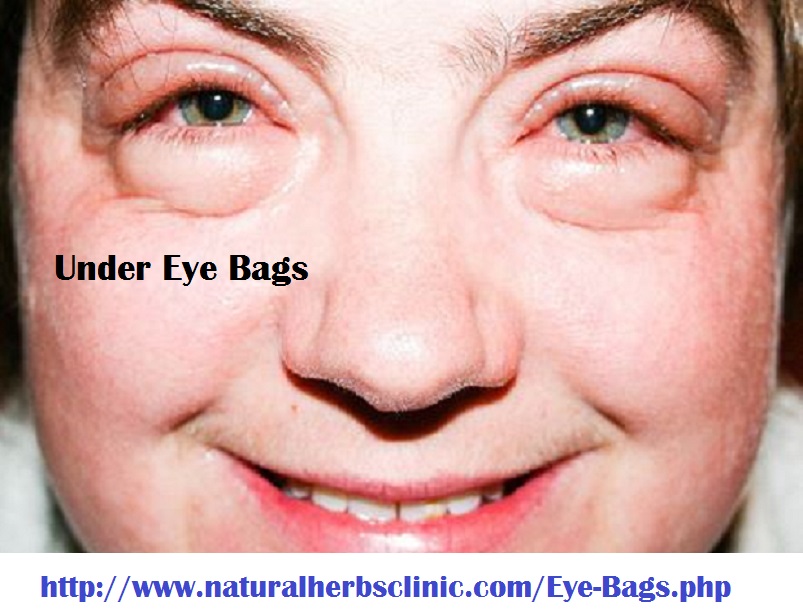
Table of eyelid edema types Type of edema Cause of occurrence Characteristics
| Mechanical | Trauma, contusion | Allergic | Allergen exposure, allergic drug reaction | Rapidly progressive edema | |
| Infectious | Effects of infection on the eye and eyelid | Redness, severe swelling, pain and itching |
Determining the type of eyelid edema is an important step in the correct diagnosis and treatment of the disease. Studying the symptoms and contacting a specialist will help identify the cause of the edema and choose the most effective method of treatment.
Eyelid edema causes
Insufficient sleep: Eyelid edema can be caused by insufficient sleep, which in turn can lead to poor blood circulation.
Allergy: Eyelid swelling can also be caused by an allergic reaction to dust, pollen, pets, food, etc.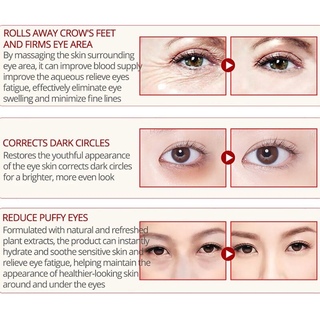 Edema of the eyelid in this case may be accompanied by itching and red eyes.
Edema of the eyelid in this case may be accompanied by itching and red eyes.
Injuries: Swelling of the eyelid can be caused by various injuries, such as bruises, abrasions, skin tears.
Overwork: Excessive strain on the eyes, such as prolonged use of a computer or smartphone, can cause eye muscle fatigue, which can cause swelling of the eyelid.
Hormonal disorders: Some hormonal changes, such as during pregnancy or menopause, can lead to swelling of the eyelid.
Disease conditions: Some diseases, such as gastroenterological diseases and diseases associated with metabolic disorders, can also cause swelling of the eyelid.
Eyelid edema symptoms
Eyelid edema can present with different symptoms depending on the cause. Of the most characteristic symptoms can be identified:
- Edema . There is an increase in the volume of tissue on the eyelid, which can be noticeable to the eye or felt when touched.

- Skin redness . The eyelid may become red and hot to the touch.
- Pain and itching . There may be pain and itching in the area of eyelid edema.
- Eyelid restriction . Due to swelling, the eyelid can become tight and difficult to manage.
- The appearance of a “bag” under the eye . One of the most noticeable symptoms of eyelid edema, which can occur with a long stay in a horizontal position.
- Edema . There is an increase in the volume of tissue on the eyelid, which can be noticeable to the eye or felt when touched.
If these symptoms appear, you should consult a doctor to determine the exact cause of the swelling and prescribe the appropriate treatment.
Diagnosis of Eyelid Swelling
Visual Examination
To start the diagnosis, the doctor performs a visual examination of both eyelids of the face and determines whether only one or both eyes are swollen. The doctor also evaluates possible symptoms associated with eyelid edema, such as redness, itching, soreness, and others.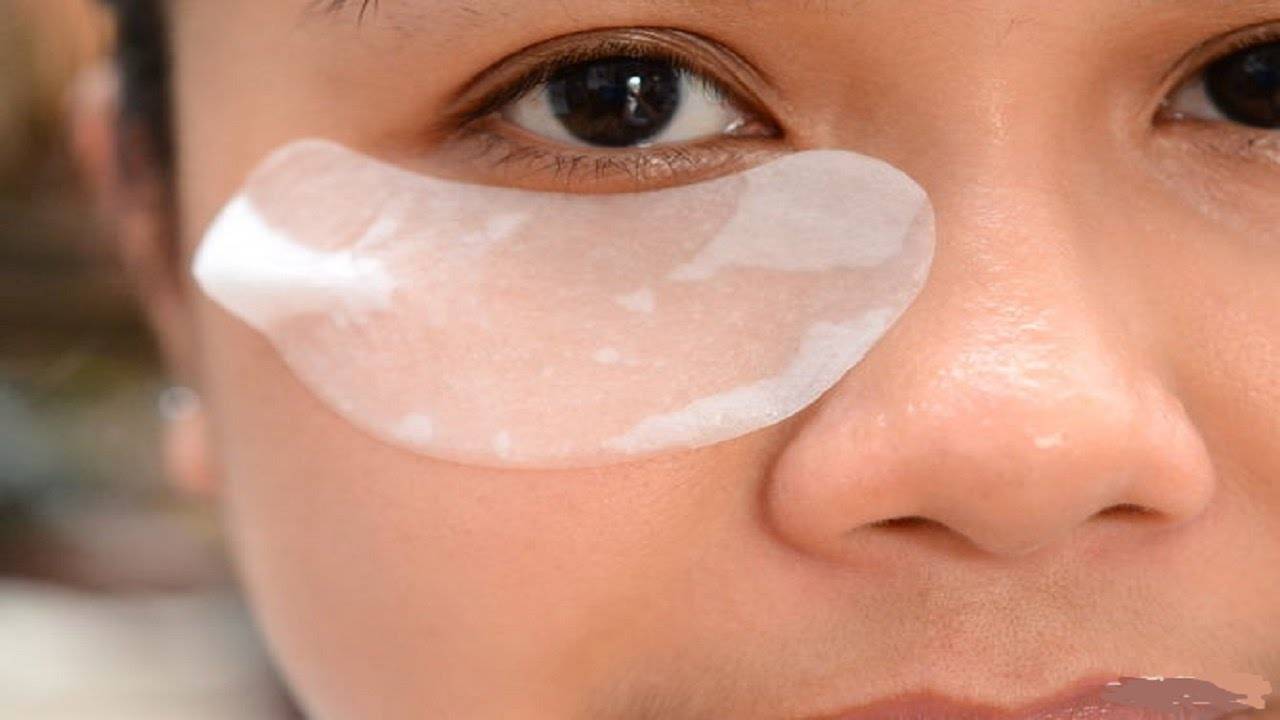
Eye pressure measurement
In cases where eyelid swelling is due to eye problems, the doctor may measure eye pressure to check for glaucoma or other eye conditions.
Blood and urine tests
If a doctor suspects eyelid swelling may be due to other conditions in the body, such as heart failure or kidney failure, a blood and urine test may be ordered to check for abnormalities.
Ultrasound examination
In cases where the doctor for some reason cannot determine the cause of eyelid swelling as a result of examination, an ultrasound examination may be ordered to identify possible causes of swelling by examining the area in more detail.
Computed tomography
In some situations, it may be necessary to perform a computed tomography, which provides more detailed information about the condition and structure of the tissues of the eye and eyelid, and can help the doctor determine the cause of swelling of the eyelid.
How to avoid swelling of the eyelid?
Eyelid edema is an unpleasant condition that worsens the appearance and can cause discomfort. However, there are a few things you can do to avoid it: Eat foods rich in vitamins and minerals that will help strengthen blood vessels and improve blood circulation. Limit salt intake to reduce fluid retention in the body.
However, there are a few things you can do to avoid it: Eat foods rich in vitamins and minerals that will help strengthen blood vessels and improve blood circulation. Limit salt intake to reduce fluid retention in the body.

Following these simple rules will help you avoid swelling of the eyelid and maintain healthy skin around the eyes.
How to treat eyelid edema
Eyelid edema can be caused by various causes, so proper treatment should always begin with a consultation with your doctor. He will determine the cause of the edema and select the most effective method of treatment.
One of the most popular treatments is the use of cold. To do this, you can apply a lozenge or a frozen eye mask to the eyelid. This method can help reduce swelling and relieve pain.
If the swelling is caused by an allergy, then the most effective treatment is to take antihistamines. You can also use capillary constrictors to help reduce swelling and improve circulation around the eyelids.
In some cases eyelid edema may be due to kidney or heart problems. In this case, treatment should be aimed at eliminating the underlying disease.
If swelling of the eyelids occurs, salty and fatty foods should be avoided, and liquid intake should be limited. It is also recommended to increase your physical activity in order to improve blood circulation in the eyelid area.
- Use the most effective treatment your doctor recommends
- Apply ice to your eyelid to reduce swelling
- Take antihistamines for allergies
- Limit salty and fatty foods
- Increase your physical activity
We treat eyelid edema with folk remedies!
Remedy #1: Parsley Leaves
Parsley leaves contain many beneficial substances that help to eliminate swelling of the eyelids. Apply a small bunch of fresh parsley leaves to your eyelids for 10-15 minutes. This remedy has a diuretic and anti-inflammatory effect and helps reduce swelling.
Remedy #2: Green tea compresses
Green tea has a pronounced anti-inflammatory effect. To prepare compresses, brew green tea and cool it. Pour ice cubes into a cloth and apply to the eyelids for 10-15 minutes. This remedy improves circulation and reduces swelling.
To prepare compresses, brew green tea and cool it. Pour ice cubes into a cloth and apply to the eyelids for 10-15 minutes. This remedy improves circulation and reduces swelling.
Treatment #3: Vodka and Honey Wrap
Honey is anti-inflammatory and moisturizing, while vodka is anti-inflammatory and cooling. Mix them in equal proportions and moisten gauze swabs in the resulting liquid. Apply to eyelids and leave on for 20-30 minutes. This tool helps to eliminate swelling and improves the condition of the skin around the eyes.
- Important to remember!
- Home remedies can help, but they do not replace specialist advice.
- In case of poor tolerance to any of the drugs, treatment should be stopped immediately.
- Before using folk remedies, check for an allergic reaction.
- Important to remember!
How to quickly eliminate swelling of the eyelid
Symptoms of swelling of the eyelid
Various causes can cause swelling of the eyelid, symptoms of which include:
- swelling of the eyelids
- feeling of heaviness in the eyelids
- limited movement of the eyelids
- uneven contour of the eyelids
Treatments for eyelid edema
The following methods can be used to quickly relieve eyelid edema: vessels and reduce eyelid edema.
Possible complications of eyelid edema
Eyelid edema can lead to several complications that must be taken into account and be prepared for if they occur.
- Visual impairment: If swelling of the eyelid leads to severe swelling of the eyeballs, it can slow down the blood circulation in the eyes, which can lead to visual impairment.
- Respiratory problems: Swelling of the eyelid can cause respiratory problems if it affects the upper eyelid.
- Infection: If the cause of eyelid swelling is due to an infection, the symptoms of swelling may worsen and cause more serious problems.

- Psychological problems: Edema of the eyelid can lead to psychological problems due to changes in appearance, especially in people whose appearance has been characterized by the absence of edema for a long time.
If you notice swelling of the eyelid, you should immediately consult a doctor to avoid any complications. Your doctor can prescribe medication to prevent possible problems and give you care tips to avoid swelling in the future.
Q&A:
What is eyelid edema?
Eyelid edema is swelling of the tissues around the eye caused by fluid accumulation. This can be the result of various problems such as allergies, infections, injuries, or medical conditions.
What are the symptoms associated with eyelid edema?
Symptoms of eyelid edema may include swelling around the eyes, puffiness or redness of the eyes, itching or burning of the eyes, decreased vision, and disturbed sleep. In some cases, lacrimation or discharge of fluid from the eye is possible.
What are the causes of eyelid edema?
Problems that cause swelling of the eyelid may be due to allergies to dust, smoking, infections, problems sleeping at night, adverse effects of medications, or lifestyle problems in general. In more rare cases, the causes may be related to a malfunction of the lymphatic system, a disease of the thyroid gland or the cardiovascular system.
How can eyelid edema be treated?
Treatment for eyelid edema depends on its cause. If the cause is an allergy, then you should get rid of the allergen or take antihistamines. In case of infection, antibiotics may be required. If the swelling is caused by lifestyle, then you should stop smoking, increase the amount of sleep and exercise. In some cases, surgery may be required to correct the swelling.
How can eyelid edema be prevented?
To prevent swelling of the eyelids, shower regularly, use quality cosmetics to care for the skin around the eyes, and avoid smoking and high salt in food. It is also important to monitor your health and avoid factors that can cause swelling.
It is also important to monitor your health and avoid factors that can cause swelling.
When should I see a doctor if my eyelid is swollen?
If eyelid swelling persists for more than a few days or is accompanied by other symptoms, including skin rash, soreness, or vision problems, see a doctor immediately. This is especially important if the swelling is caused by an infection or something serious.
Eyelid care tips for edema
Eyelid edema is an extremely unpleasant phenomenon that requires special care. First of all, you should pay attention to the hygiene of the eyelids. Gently wash them with a special makeup remover. Do not rub the skin, otherwise you can only aggravate the situation.
Cold compresses will help reduce puffiness, but don’t overdo it to avoid overcooling your skin. Use clean tissues or ice wrapped in a towel.
To moisturize your eyelids, use special eye creams with soothing ingredients such as aloe or cucumber.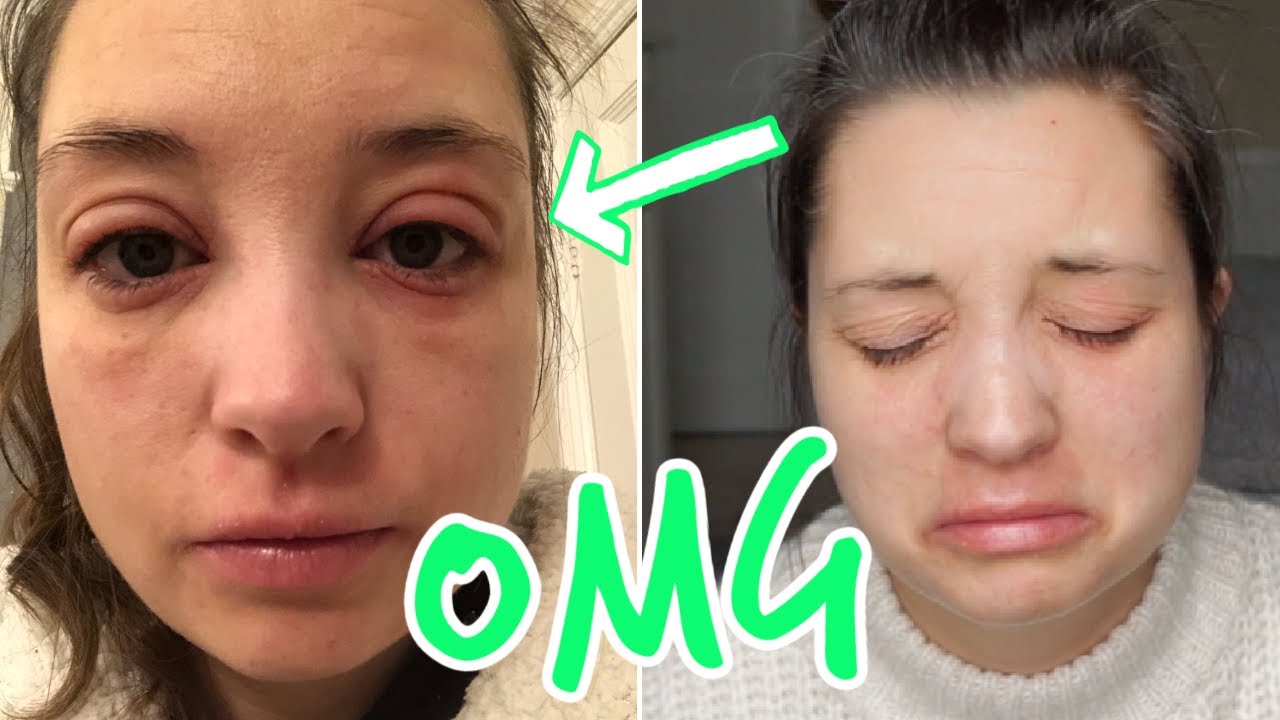 Apply them with gentle movements, without rubbing the skin.
Apply them with gentle movements, without rubbing the skin.
If the swelling persists, see a specialist. He will help determine the cause of the swelling and prescribe the necessary treatment. Do not self-medicate, so as not to aggravate the situation.
- Take care of eyelid hygiene.
- Do not rub the skin.
- Use cold compresses.
- Moisturize your skin with eye creams.
- See a specialist if swelling persists.
Related videos:
causes, symptoms, and treatments
Red eyes and eyelid swelling can indicate a variety of health problems, from allergies and fatigue to serious infections and diseases. Find out what causes these symptoms and how they can be treated and prevented.
Redness of the eyes and swelling of the eyelids can lead to serious diseases that must be treated professionally and promptly. Often, redness of the eyes is accompanied by itching and irritation, and swelling of the eyelids can lead to visual impairment and pain.
Often, redness of the eyes is accompanied by itching and irritation, and swelling of the eyelids can lead to visual impairment and pain.
There are many factors that can cause redness of the eyes and swelling of the eyelids. They can be related to allergies, infection, fatigue or overwork, stress, injury, and other causes. At the same time, symptoms can appear in one or both eyes and require special attention from doctors.
In this article, we will tell you about the exact identification of the symptoms and causes of redness of the eyes and swelling of the eyelids, and also consider in detail the various methods and treatments that can help to quickly and effectively eliminate these ailments.
External causes of redness of the eyes and swelling of the eyelids
Very often, redness of the eyes and swelling of the eyelids appear due to external factors.
- Allergy. Dust, pollen, smoke, lint, animal dander and other allergens may cause redness of the eyes and swelling of the eyelids.
 Some people suffer from seasonal allergies, such as hay fever, where symptoms may only appear at certain times of the year.
Some people suffer from seasonal allergies, such as hay fever, where symptoms may only appear at certain times of the year. - Dry eyes. Prolonged computer use or reading can cause dry eyes, which can cause redness and swelling of the eyelids.
- Sun and wind exposure. Prolonged exposure to the sun or strong winds can irritate the skin around the eyes, causing redness and swelling of the eyelids.
- Make-up and cosmetics. Some makeup products can cause allergic reactions, which can lead to redness and swelling of the eyelids. In addition, the use of outdated or expired cosmetics can also cause irritation and redness of the eyes.
If redness of the eyes and swelling of the eyelids do not go away for a long time and the symptoms become more intense, you should consult a doctor.
Related videos:
youtube.com/embed/HhGmmjBu8S8″ frameborder=”0″ allowfullscreen=”allowfullscreen”>
Internal causes of eye redness and eyelid swelling
Eye redness and eyelid swelling can occur due to internal factors:
- Allergic reactions. Swelling and redness of the eyes may be caused by a reaction to allergens such as dust, plant pollen, houseplants, washing powder, etc.
- Eye infections. Infection with bacteria or viruses can lead to redness and swelling of the eyelids. Some known infections of the eye include dacryocystitis, conjunctivitis, and keratitis.
- Eyelid drooping. As the lower eyelid droops, lymph stasis can occur, leading to swelling and redness of the eyes.
- General diseases. People suffering from diseases such as migraine, stroke, hypertension, diabetes, etc. may experience eye problems, including redness and swelling of the eyelids.
If the redness of the eyes and swelling of the eyelids do not disappear within a few days, be sure to consult a doctor for diagnosis and treatment.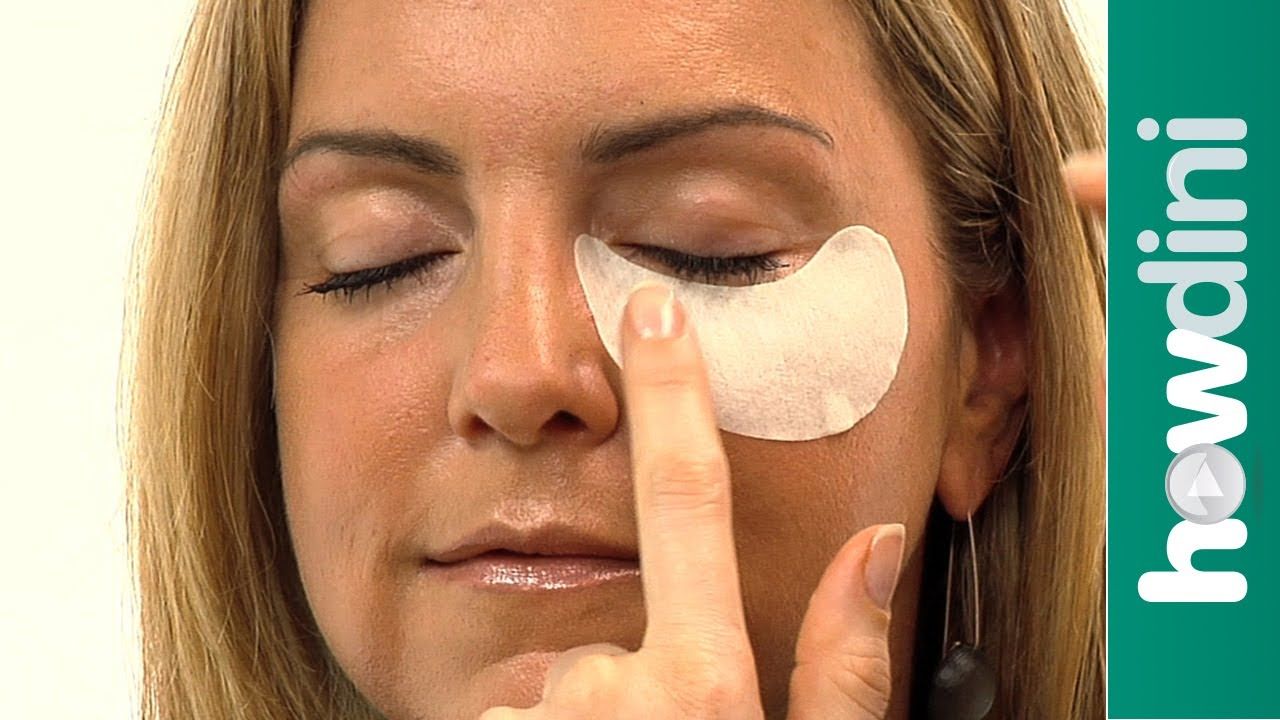
Q&A:
What causes redness of the eyes and swelling of the eyelids?
Redness of the eyes and swelling of the eyelids can be caused by various causes, including allergic reactions, infectious diseases, trauma and other factors.
What are the symptoms associated with redness of the eyes and swelling of the eyelids?
Redness of the eyes and swelling of the eyelids are often associated with discomfort and itching in the eyes, watering, possibly double vision or blurring.
What is conjunctivitis and how is it treated?
Conjunctivitis is an inflammation of the conjunctiva, the outer layer of the eye. Treatment depends on the cause of the inflammation and may include eye drops, antibiotics, or antivirals.
What is the recommended treatment for an allergic reaction resulting in redness of the eyes and swelling of the eyelids?
For an allergic reaction, treatment may include antihistamines or eye drops, such as those containing antihistamines, steroids, or urea.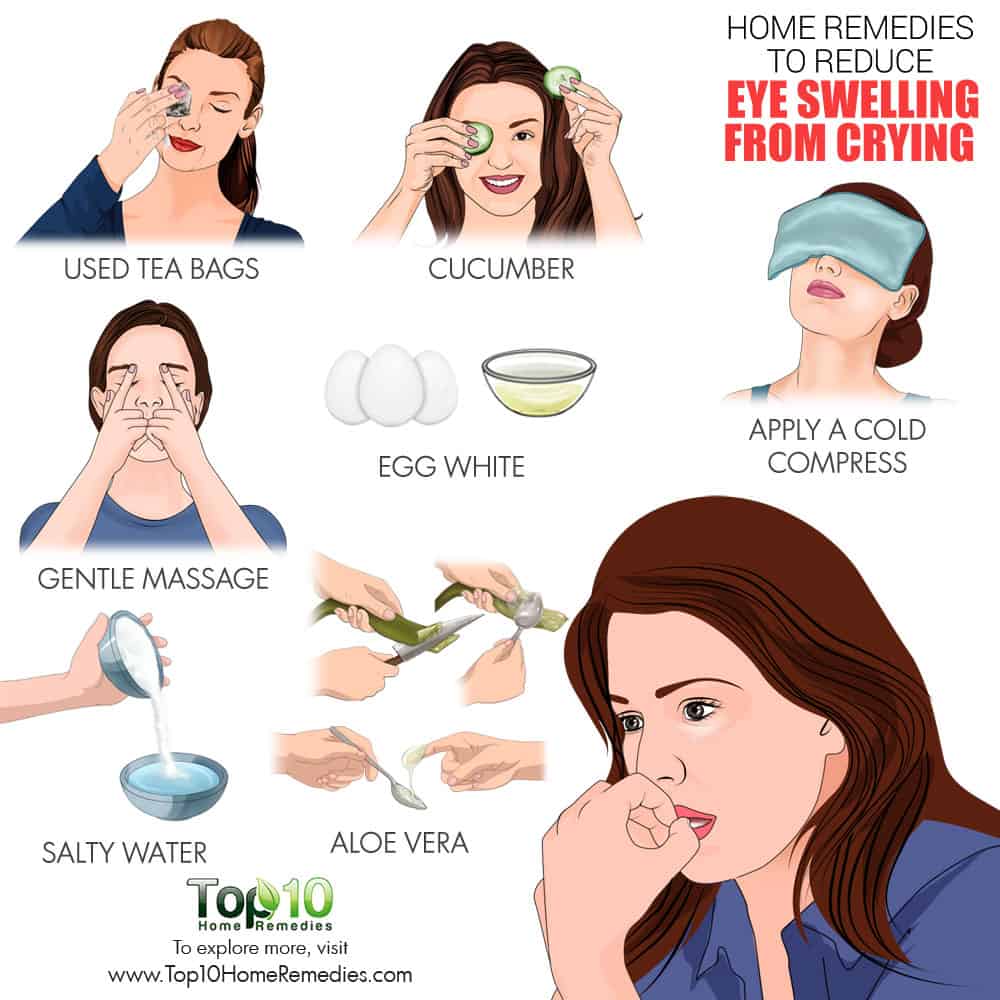 If symptoms worsen, a doctor should be consulted.
If symptoms worsen, a doctor should be consulted.
What precautions can be taken to prevent redness of the eyes and swelling of the eyelids?
Prevention of eye redness and eyelid swelling may include proper eye care, avoidance of contact with allergens, including dust and smoke, and use of safety goggles when working with chemicals or when playing sports.
Can redness of the eyes and swelling of the eyelids be caused by insufficient sleep?
Yes, insufficient sleep can lead to red eyes and swelling of the eyelids, because insufficient rest can lead to eye fatigue and constriction of blood vessels. Getting adequate rest and sleep is recommended to prevent symptoms.
What causes swollen eyelids in the morning?
Eyelid swelling in the morning can be caused by insomnia, lack of sleep, an allergic reaction to dust or nutrients consumed before bed, a drinking regimen that leads to fluid retention, and infectious disease or injury.
What diseases can lead to redness of the eyes and swelling of the eyelids
Conjunctivitis is an inflammatory disease of the mucous membrane of the eyeball and eyelids, which can lead to redness of the eyes and swelling of the eyelids. Conjunctivitis is usually caused by viruses, bacteria, or allergens. Depending on the cause of conjunctivitis, treatment may include antibiotics, antivirals, or antihistamines.
Conjunctivitis is usually caused by viruses, bacteria, or allergens. Depending on the cause of conjunctivitis, treatment may include antibiotics, antivirals, or antihistamines.
Dacryoadenitis is an inflammatory disease of the lacrimal gland that can lead to redness of the eyes and swelling of the eyelids. It is usually caused by an infection, and in some cases may be associated with diseases of the immune system. Treatment of dacryoadenitis includes the use of antibiotics and other anti-inflammatory drugs.
Redness of the eyes and swelling of the eyelids may also be caused by an allergic reaction . Allergic conjunctivitis can be caused by a variety of allergens such as pollen, lint, dust, animals, and certain chemicals. Treatment includes the use of antihistamines and agents to reduce inflammation.
In addition, eye redness and swelling of the eyelids can be caused by diseases such as0102 eye pollution and others. In some cases, you may need to consult a specialist for the correct diagnosis and treatment.
In some cases, you may need to consult a specialist for the correct diagnosis and treatment.
What symptoms accompany redness of the eyes and swelling of the eyelid
Redness of the eyes and swelling of the eyelid can be signs of various diseases. For an accurate diagnosis, you need to consult an ophthalmologist. However, there are several symptoms that often accompany redness of the eyes and swelling of the eyelid.
- Lachrymation – an increased amount of tears may be a sign of inflammation of the conjunctiva.
- Itching and burning of the eyes – these symptoms may indicate an allergy to some irritant.
- Photophobia is a reaction to bright light. It is often found in conjunctivitis and other inflammatory diseases.
Eye redness and eyelid swelling can also be caused by other causes: infection, injury to the eye or face, improper use of contact lenses, etc. If these symptoms appear, you should consult a doctor for diagnosis and treatment.
How to correctly diagnose eye redness and eyelid swelling
Eye redness and eyelid swelling are common symptoms of various diseases of the eyeball and its circumference. However, before starting treatment, it is necessary to accurately establish the patient’s diagnosis, which can only be achieved with proper diagnosis.
The doctor will definitely conduct a visual examination, and, if necessary, conduct additional studies. Depending on the established cause of the symptoms, the following diagnostic procedures may be prescribed:
- blood and urine test;
- bacteriological examination;
- ultrasound;
- computed tomography;
- magnetic resonance imaging;
- fundus biomicroscopy;
- electrophysiological examinations;
- intraocular pressure measurement.
More accurate identification of the causes of redness of the eyes and swelling of the eyelids allows you to choose the most effective treatment.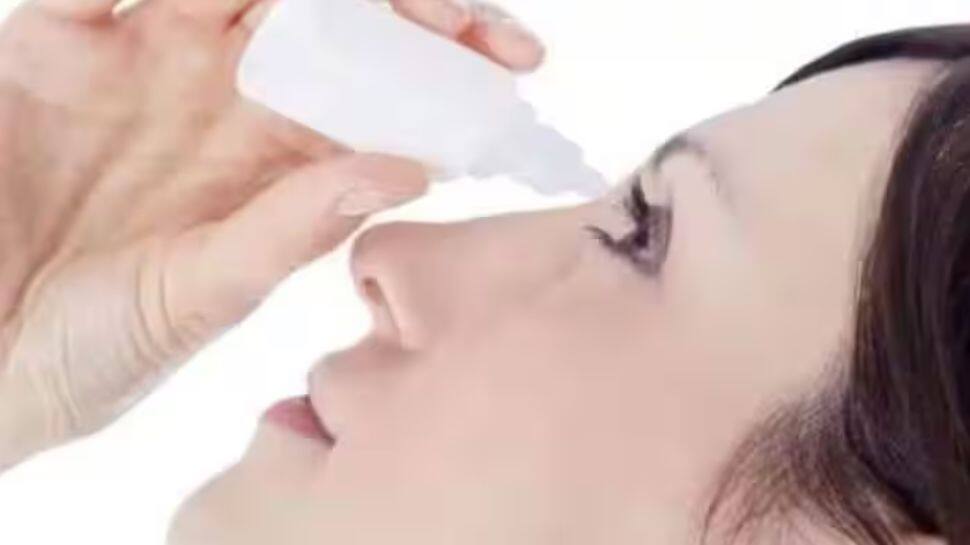 Therefore, if such symptoms occur, it is necessary to contact a qualified specialist in the field of ophthalmology.
Therefore, if such symptoms occur, it is necessary to contact a qualified specialist in the field of ophthalmology.
What are the treatments for redness of the eyes and swelling of the eyelids
The treatment for redness of the eyes and swelling of the eyelids depends on their causes.
If the cause of redness of the eyes is associated with allergies or inflammation, then you should consult a doctor who will prescribe drops or ointments for the eyes or give recommendations on folk methods.
If the redness of the eyes is due to fatigue or prolonged work at the computer, you need to take breaks and reduce eye strain. Some eye exercises, such as eyelid massage, can help relieve fatigue and prevent redness.
Swelling of the eyelids can also be caused by fatigue or sleep disturbance. Cold compresses, such as ice packs or wet tea bags, can be used to reduce swelling. Other methods, such as massage or eyelid exercises, can help improve circulation and reduce swelling.
Redness of the eyes and swelling of the eyelids: products and preparations
Redness of the eyes and swelling of the eyelids can be caused by various causes, such as allergies, infection, eye fatigue, dryness, and others.
Redness of the eyes and swelling of the eyelids can be treated with various agents and preparations. One of the most popular drugs for the treatment of redness of the eyes is Vizin or Optiva drops. They are able to quickly eliminate the redness of the eyes and reduce swelling. You can also use drops “Arti-Sens” or “Systane” to eliminate dry eyes.
Creams and gels can be used to relieve swelling of the eyelids. For example, Badyan, an eye gel containing natural ingredients, can quickly eliminate eyelid edema. You can also use “Leopoldovsky balm” – a cream that relieves eye fatigue and reduces swelling.
Do not forget about traditional methods of treatment, which can also help. The generally accepted method is the use of a cold compress. To do this, you just need to apply a compress with ice water to your eyes or use an ice bag.
To do this, you just need to apply a compress with ice water to your eyes or use an ice bag.
- Vizin or Optiva drops
- Arti-Sens or Systane drops
- Star anise eye gel
- Leopoldovsky balm cream
using any means and preparations, it is necessary to consult a doctor and get recommendations on their use.
Simple home remedies for red eyes and eyelid swelling
Red eyes and eyelid swelling can be caused by various causes such as allergies, conjunctivitis, eye fatigue, etc. If you experience these symptoms, you can try simple home remedies before going to the doctor.
1. Chamomile tea infusion
Chamomile can be used both internally and externally. An infusion of chamomile tea has anti-inflammatory properties that can help with eye redness and eyelid swelling. To do this, you need to brew a teaspoon of chamomile in a glass of boiling water, let it brew and cool. Then moisten cotton pads or gauze napkins in this dissolution and apply on closed eyes for 10-15 minutes.
2. Cucumber compress
Cucumber has cooling properties that can help reduce puffiness and redness in the eyes. You need to cut the cucumber into thin circles and place them on closed eyes for 15 minutes.
3. Herbal eye drops
Herbs such as mint, basil and rosemary can be used to make eye drops. For example, mint herb can be made into an infusion and used as eye drops to help soothe the eyes and reduce redness. But before using herbal eye drops, you should always consult with your doctor.
Treatments for red eyes and eyelid swelling
Cold water or ice compresses: Cooling the eyelids helps constrict blood vessels and reduce swelling. Take a soft cloth or gauze soaked in cold water, or wrap ice in a clean cloth and apply to closed eyes. Keep the compress on for about 10 minutes.
Warm water compresses: If fatigue or strain is the cause of red eyes and eyelid swelling, warm compresses may help. Fill a bowl with warm water, soak a soft cloth or gauze in the water and apply over closed eyes for 10-15 minutes.
Fill a bowl with warm water, soak a soft cloth or gauze in the water and apply over closed eyes for 10-15 minutes.
Eyelid massage: A gentle massage around the eyes can help relax muscles and relieve tension. Massage in a circular motion with your index and middle fingers around the outer corner of the eye and along the edges of the eyelids. Massage for about 1-2 minutes.
Special eye drops: If the redness of the eyes and eyelid swelling are due to an allergy or infection, your doctor may prescribe special eye drops. They restore the moisture of the eye surface, reduce swelling and redness.
Good sleep: Lack of sleep can aggravate redness of the eyes and eyelid swelling. Try to improve the quality and quantity of sleep, get enough sleep, thereby reducing eye strain and swelling.
How to Prevent Red Eyes and Eyelid Swelling
Red eyes and eyelid swelling can be caused by many things, from allergies to eye fatigue. But there are ways to help you prevent their occurrence.
But there are ways to help you prevent their occurrence.
1. Protect your eyes from the environment. Wear safety goggles or sunglasses in bright sunshine and in various types of wind and dust. Avoid close contact with smoke such as tobacco smoke.
2. Practice good eye hygiene means you should wash your hands frequently before touching your eyes and remove make-up using special products. Do not use cosmetics that cause allergic reactions.
3. Respect your eyes – If you work at a computer for a long time, increased eye strain can lead to redness and swelling. Take breaks, pay attention to the lighting and the position of your workplace.
4. Keep Your Body Healthy — Eat foods that are rich in vitamins A, C and E and other nutrients. Avoid smoking and drinking alcohol, as these can aggravate the eye situation.
5. See a doctor – if you notice that the redness and swelling of the eyelids have not gone away, you need to see a specialist. He will diagnose and tell you what alternative treatments can help your eyes.
He will diagnose and tell you what alternative treatments can help your eyes.
By following these simple tips, you can protect your eyes from redness and swelling, keeping them healthy.
Hygiene to avoid eye redness and eyelid swelling
Proper eye hygiene helps to avoid eye redness and eyelid swelling. It is important to observe the following rules:
- Do not rub your eyes with your hands as this promotes transmission of infection to the eyes. If there is a need to scratch your eyes, it is better to use napkins.
- Avoid eye contact with objects of all kinds as they may be a source of infection. This applies to cosmetics, contact lenses, hands and many other surfaces.
- Maintain contact lens hygiene . If you use contact lenses, make sure you store and clean them properly to avoid infection.
- When using the computer, take regular breaks to rest your eyes.
 Don’t forget to blink as it helps keep your eyes moist.
Don’t forget to blink as it helps keep your eyes moist. - Avoid overly elaborate eye makeup , especially if the eyes are already red and swollen. Don’t forget to remove your makeup before bed.
Good hygiene will help to avoid redness of the eyes and swelling of the eyelid, as well as maintain eye health for many years.
How to eat right to prevent redness of the eyes and swelling of the eyelids
Proper nutrition is one of the main factors in the prevention of redness of the eyes and swelling of the eyelids. Certain foods help strengthen blood vessels and reduce inflammation, thereby reducing the risk of these problems.
One of the healthiest foods is red fish, which contains omega-3 fatty acids that reduce inflammation. It is also recommended to consume fresh vegetables and fruits containing antioxidants such as vitamin A and C, which help to strengthen the vascular wall of the eyes.
It is important to eliminate salty, fatty and spicy foods from your diet, which can cause swelling of the eyelids and aggravate redness of the eyes. You should also drink enough fluids to avoid dehydration, which can also contribute to swelling and redness of the eyes.
You should also drink enough fluids to avoid dehydration, which can also contribute to swelling and redness of the eyes.
If symptoms of eye redness and swelling appear, it is recommended to reduce the consumption of alcohol and caffeine, which can worsen the condition of the eyes, and consult a doctor immediately. He may prescribe a special diet or drugs to treat eye problems.
- Keep your diet fresh fruits and vegetables rich in antioxidants
- Reduce fatty, salty and spicy foods
- Drink plenty of fluids
- Cut down on caffeine and alcohol
How to properly use eye cosmetics to avoid redness and swelling of the eyelids
Eye cosmetics are an essential part of daily skin care. However, their misuse can lead to redness and swelling of the eyelids. Below we share with you some tips on how to use eye makeup correctly.
1. Do not use expired cosmetics
Use of expired cosmetics may cause eye and eyelid irritation. Therefore, before applying cosmetics, make sure that they have not expired.
Therefore, before applying cosmetics, make sure that they have not expired.
2. Remove makeup before bed
Sleeping with eye makeup on can lead to bacteria and germs accumulating on the skin, which can cause redness and swelling of the eyelids. Make sure you thoroughly remove all makeup before bed.
3. Use hypoallergenic cosmetics
If you have sensitive eyelid skin or a tendency to allergic reactions, choose hypoallergenic cosmetics. It will help to avoid the appearance of redness and swelling of the eyelids.
4. Apply makeup correctly
Apply cosmetics with light and gentle movements without stretching the skin of the eyelids. This will help to avoid the appearance of brown spots and wrinkles on the skin of the face.
5. Do not overuse makeup
Never apply multiple layers of mascara or eye shadow at one time. This can lead to discomfort and the appearance of redness and swelling of the eyelids.
- It must be remembered that cosmetic care should be regular.

- It is better to use premium cosmetics that are more beneficial for your skin.
- Cosmetics can only be used after consultation with a dermatologist in case of any skin diseases of the eyelids or eyes.
Can contact lenses be used for redness of the eyes and swelling of the eyelids
In case of redness of the eyes or swelling of the eyelids, the use of contact lenses may worsen the situation and cause additional vision problems. First of all, wearing contact lenses can irritate the eye, which will increase the redness and swelling. Therefore, if you have these problems, it is better not to wear lenses and opt for regular glasses.
In addition, contact lenses can lead to eye infections, especially if the wearer experiences bacterial or viral conjunctivitis. Microbes that can get under the lenses can cause very serious illnesses, including loss of vision.
As a consequence, if you have redness of the eyes or swelling of the eyelids, it is best not to wear contact lenses and seek immediate medical attention. He will make a diagnosis and prescribe the appropriate treatment. In addition to treatment, some additional measures may be recommended, such as the use of special eye drops or lubricants, to reduce discomfort. In exceptional cases, when contact lenses are necessary for everyday life, you should consult your doctor about the possibility of using daily lenses.
He will make a diagnosis and prescribe the appropriate treatment. In addition to treatment, some additional measures may be recommended, such as the use of special eye drops or lubricants, to reduce discomfort. In exceptional cases, when contact lenses are necessary for everyday life, you should consult your doctor about the possibility of using daily lenses.
When to See a Doctor for Red Eyes and Swelling of the Eyelids
Redness of the eyes and swelling of the eyelids can be symptoms of various disorders of the eyeball, eyelids, or related organs. Some of these diseases are serious and can lead to poor vision or even loss of an eye.
If redness of the eyes and swelling of the eyelids are accompanied by pain, stinging, itching, severe photophobia, spotting, blurred vision, or watery eyes, seek medical attention.
Also, if redness of the eyes and swelling of the eyelids do not improve after home treatments such as ice packs, eye drops, or medicated ointments, a doctor should be consulted.
The search for the cause of redness of the eyes and swelling of the eyelids must be timely and accurate, so do not put off going to a specialist. It is very important to get a timely diagnosis and prescribe the right treatment to prevent possible complications.
How can a doctor help with redness of the eyes and swelling of the eyelids
In the event of redness of the eyes and swelling of the eyelids, seek immediate medical attention. The doctor will conduct an examination, study the symptoms and determine the cause of the disease.
Depending on the identified disease, the doctor may prescribe treatment. In the event of an allergic reaction, the patient is given antihistamines and eye drops, which keep moisture in the eye and reduce eyelid swelling. If the redness of the eyes is caused by an infection, treatment includes antibiotics and eye drops to help clear the infection.
If redness of the eyes and swelling of the eyelids are caused by other factors, such as hypertension or drug intolerance, the doctor will prescribe a treatment aimed at eliminating the underlying cause of the disease.


 Use over-the-counter artificial tears to keep your eyes moist. Antihistamine drops can help with allergies.
Use over-the-counter artificial tears to keep your eyes moist. Antihistamine drops can help with allergies. 5.5 Computed tomography
5.5 Computed tomography 13 Related videos:
13 Related videos:
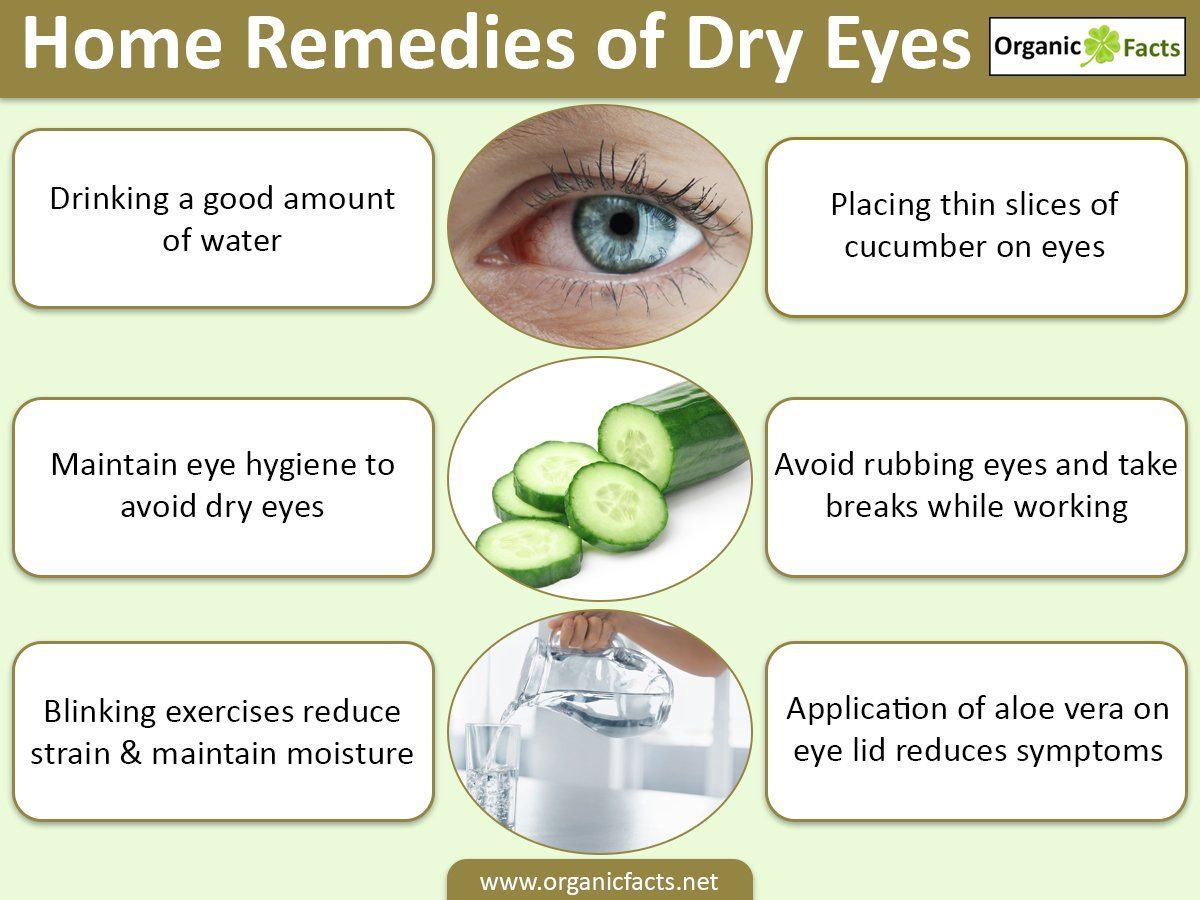

 Some people suffer from seasonal allergies, such as hay fever, where symptoms may only appear at certain times of the year.
Some people suffer from seasonal allergies, such as hay fever, where symptoms may only appear at certain times of the year. Don’t forget to blink as it helps keep your eyes moist.
Don’t forget to blink as it helps keep your eyes moist.